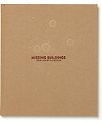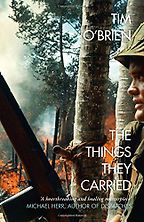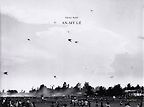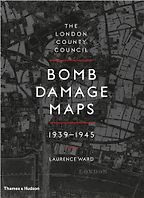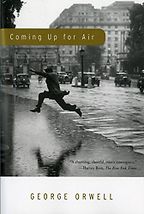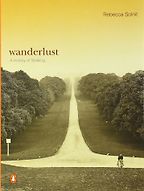You have just published a book of photographs of sites in London that are still empty from bomb damage during the Blitz. How do you think the Blitz has been mythologized?
Thom: It’s become an epic story, especially to our generation, who are a bit more detached from the actual events. It’s something we understand mediated through books and films and other sources, rather than direct memory. The Blitz is like Robin Hood to us now, it’s a touchstone for how we think of ourselves in Britain: the Blitz spirit.
How do you get a sense of the abject aspects of the experience?
Thom: It’s not portrayed in the mythology. The images that spring to mind when thinking of the Blitz are all images of survival and stoicism. Not bodies and gore. The way the art of the Blitz is expressed is through images of buildings: bombed houses, wrecked houses, sheared-off walls of houses.
Beth: A damaged building is a stand-in for a damaged body. Bombed out buildings are substitutes for that trauma. Seeing a home ripped open is uncanny. Our book is an attempt to record what’s left of that situation, to find resonances with that situation in the city now. The myth pushes back the more visceral and abject side of war. Our war memorials are clean, big, marble, government-sanctioned structures, not a domestic house where agony has occurred. In a sense it’s a repression of trauma, or a smoothing-over of the visceral elements of it.
In the afterword to your book, it mentions that you didn’t know these were bomb sites before you photographed them and it turned out that most of them were. Why did you decide to approach them in this way?
Beth: It was important to us that this wasn’t a factual documentation of sites because it was driven by this interest in the myth, in what we imagine, in what we imagine of ourselves and the city. When we walked around London we would notice things and guess at what happened there and tie them to this narrative. To find out whether they were real or not would have defeated the point of highlighting the myth. In that sense London, for us, is haunted by what happened, but making a catalogue of what happened would have taken that away.
“Other cities were just as badly damaged… but somehow the myth is all about London”
Thom: The premise right at the beginning was that this missing building, or the signs of a damaged building, or a building that used to be there, means something different in London to anywhere else.
Beth: That’s not to say that the Blitz didn’t happen in other cities, but the myth is very London-centric.
Thom: Exactly, other cities were just as badly damaged relative to their size. But somehow the myth is all about London.
A lot of the book seems to be about how intimately buildings are built to begin with, and how when one building goes away, the other seems to be displaying its loss. It’s almost like grief.
Beth: I think grief and mourning are a really important part of the work. And when we’d finally decided we were going to stop shooting and we put all the pictures out on the floor, even though we had got so used to seeing them—desensitized in a way, I found it so moving to see so many of the images because you then remember these were people’s houses, where they lived, and worked, and shopped. In the preface to an essay in The Architectural Review written during the Blitz the artist John Piper writes about a desire to preserve the ruins of the Blitz as a memorial, in the way that Fountains Abbey represents the end of another era. That was one of our motivations as well.
“The thing about a war story is you dream it as you tell it.”
Thom: For me, part of the impetus to begin the project wasn’t to make a book, but just to go to these places. Something that fascinates me is that you can go to a place where something happened, and you can stand right there and the only thing that separates you is time. Seeing these missing places and buildings there’s longing, wanting to go back in time and understand it better. But ultimately you’re never able to do that.
Your first book is The Things they Carried by Tim O’Brien. This is a semi-fictional collection of short stories about an American platoon in the Vietnam War. Why did you chose it?
Thom: When we were making the project we were always grappling with this problem of fact and fiction. The whole project’s wrapped up in it. On the one hand we were trying to find pictures that worked as pictures – that was our primary goal – and sometimes it turned out that we’d made a picture of a real bomb site, sometimes we hadn’t, and sometimes it was a bit ambiguous. The project lasted for about six years, and we were constantly worrying about whether we were doing it in the right way. When I read this book, it just answered the question, as it was all about the role of fiction in storytelling. There’s a wonderful quote in one of the stories: “story-truth is truer sometimes than happening-truth.” I think that’s a really beautiful idea and really true. It’s about what makes a war story, and the idea you can get at the truth without telling the factual truth, that by making a fictional version of the story you can reach the real meaning of the story. He says, “the thing about a war story is you dream it as you tell it.”
How does he use those ideas to tell his own story?
Thom: It’s a book of short stories. One of the stories is called ‘Good Form’. It’s about two-thirds of the way through the book and it addresses this issue. It admits that not everything you’ve read so far really happened, and explains it. O’Brien says, “I’m 45 years old now, I’m a writer, but I was a soldier, and I did see these things. But if I tell you how I remember it, it’s not true because I can’t remember it properly, it’s confused and mixed up with these other things that happened, and stories other people told me that I almost remember more than things I saw with my own eyes.” It’s all about the way fiction interweaves with fact in your memory. The book is about the Vietnam War and his experiences, but really it’s about how you remember trauma, and how you deal with it.
Book two is Small Wars by An-My Lê. This is a photo book by a Vietnamese woman who moved to America as a refugee when she was fifteen. How has this book influenced you?
Thom: It’s a kind of photographic version of Tim O’Brien’s book. She was evacuated to America during the war and grew up there. A lot of the formative years of her life and her memories of Vietnam are not very strong. A huge part of her understanding of Vietnam is through American newsreels or movies: America dealing with Vietnam, mythologising it. She’s in this strange situation; half on one side, and half on the other. She goes back to Vietnam to photograph with her mind loaded up with these images. She wanders around the landscape and because of all that mythology in her mind, and all those triggers that she’s seen in America, she views the landscape as this mythological landscape of war. She sees photographs where you wouldn’t see them: a fire on a farm, burning stubble, becomes like a bombing raid. It’s a book about how mythology affects what you see and how you interpret a landscape.
“Baudrillard talks about ‘the death of the real’; we feed ourselves endless images of violence in the form of entertainment”
Beth: The Vietnam war was really important in terms of photography. It was full of war photographers. It was a highly aestheticised war. There were a large number of incredible images that came out of it that changed the way people understood the war and added to the anti-war feeling of that time. So for her to go back with her head full of all of those images, with that as her main understanding of her original country is really incredible. She went back and she found resonances. It was a dialogue between her memory, her expectations of what Vietnam would be like according to an American, and the reality of life there. It’s a really fascinating book because she finds the resonances and they say so much. It’s also a beautiful book, a photo book, we wanted to have a photo books on the list.
I didn’t know that Vietnam was so heavily documented – that kind of documentation can often mean we become inured to images of horror.
Beth: Jean Baudrillard talks about hyperreality or ‘the death of the real’; the idea that we feed ourselves endless images of destruction and violence in the form of entertainment. So when, for example, 9/11 happened, we were so used to consuming those images in blockbuster action movies, that we had become accustomed to them—we had already seen it happen so it was strangely, horribly familiar. Darien Leader’s amazing book The New Black, which is all about mourning and melancholia, talks about cinema being this really powerful space for experiencing death in Western culture, where we’re very removed from death and its visceral, abject side. We make it all clean and nice and the cinema is a place we go together to experience it. It’s a space for coming to terms with mortality and violence and death. I think when people say “it’s just like a film” they’re right, because we’ve already made films about it. How many films have we seen about terrorist attacks? When we watch them they look the same, and terrorists watch these films too. We produce the culture that we desire.
Your third book is the London County Council Bomb Damage Maps. It was published last September, so has just been made available to the public. Who was it published for initially?
Thom: As far as I understand it, the maps themselves were made for practical purposes, they were plotted by the ARP and various other officials working for the government, the council. The idea was to partly understand what the Luftwaffe were trying to bomb, and what their process was, what their plans were, what they were aiming at, and so on, for reasons of defence and preparing for raids. But there was another level to it, which was all about what to do after the war. Even at that time they were thinking, “If we get out of this we’re going to have to rebuild everything, to fix this, what are we going to do?” I think there were other architectural reasons for it as well, safety reasons: which buildings needed to be demolished. If they didn’t keep track of it, people would have been badly hurt. Really, they were just very practical.
Do you want to give a physical description of the maps?
Thom: They’re essentially very detailed maps, down to the level of individual buildings, and they use a colour code, so each building is marked in a colour depending how damaged it was: black means a building is totally destroyed, purple means it is damaged beyond repair and would need to be demolished, then they get lighter: yellow is light damage, et cetera.
We’ve found, anecdotally, that buildings were structurally damaged and people didn’t realise at the time. There’s a process called ‘lift and shunt’, where if a bomb lands at the end of a street it can send an earthquake ripple through the ground, which can damage the foundations of building and they all lift up and land back down again. You might not find out until a hundred years later that your house has a great big crack somewhere beneath the ground. While they were very detailed, they were made under a great deal of pressure in the middle of an air raid.
“The desire to record all of that information seems an attempt to control something chaotic, to re-own the city”
They’re beautiful maps, and very fascinating if you live in London and know an area; you can start to understand the landscape in a totally new way.
Beth: One of the things behind our book is that our Grandad was an ARP warden. We found out, quite recently, that he would work all day in an architectural office, training to be a draughtsman, then all night he would go out and walk the streets, and try to find the damage, which he would then report. That would go on to someone else in charge of collating information.
The maps are about walking around and finding things, and I think this desire to record all of that information had really practical implications and reasons and uses, but it also seems to be an attempt to control something chaotic, to re-own the city.
In so many of your pictures, the spaces haven’t been used well, nothing has been designed to take the place of these buildings destroyed in the Blitz, especially nothing that’s designed to be sympathetic with the surroundings. Is this something you observed?
Beth: During the Blitz, The Architectural Review was excited about the opportunities it would give to re-shape a city that had grown very organically, and fix some of the town-planning problems that had essentially arisen because London wasn’t designed for cars, or enormous numbers of people, like an American city is. But there was also a huge lack of money, and a large number of people who needed housing. Somewhere near a million houses were destroyed in the Blitz, and people needed a place to live. So you ended up with pre-fab structures and temporary buildings that became long-term buildings. High-rises were built, the Brutalist Utopia emerged: the idea of solving the housing problem with big structures, that have since degraded.
Thom: After the war, there was this time of vision and looking forward to rebuilding and making the world better so it never happened again. Of course some of those dreams probably came true, but a lot of them didn’t because there was no money and it was a really difficult time: there was necessity.
London has the beauty of pragmatism all over it.
Thom: It’s a city that has evolved.
The next book is George Orwell’s Coming Up for Air. Why did you choose this book?
Beth: This book was published in June 1939, just before the start of the war. It’s all about the war looming over Britain and its effect on the people. It tells the story of a 45-year-old man called George Bowling. It’s a midlife crisis story. He wakes up one day and gets a new set of false teeth. He’s got kids, a house, and a job, and a wife, and all of them are a bit shit. He starts reflecting on his life and he decides to go back to his home town, Lower Binfield, as he has all these nostalgic memories of Edwardian Britain there, of meadows and fishing and beautiful girls who fancied him and good friends and all the things he feels are missing from his drudgery of a life. I think we all feel that from time to time. So he goes back and of course he finds the same thing he has found in London. Things are different and people have changed. He blames capitalism and progress. His nostalgia is destroyed.
The book is about a number of things. All the way through the shadow of the war is looming, as it was when Orwell was writing the book. The crescendo of the book is a bomb dropping in the centre of Lower Binfield: the first bomb of the war. So Bowling’s escape from the reality of conflict and contemporary life is disrupted. It’s all about the loss of that idyllic Britain, and loss of that perfect imagined England.
Get the weekly Five Books newsletter
It relates to the propaganda and myths used during the Blitz about what we’re fighting for. You’re not going to convince many people to stick around and work for the war effort if what you’re fighting for is a sludgy, wet trudge up the hill to your job and paying your gas bill. You have to fight for this Edwardian England, the freedom and peacetime and the rolling green hills that were used in the propaganda at the time. They used images of pastoral scenes, things only a very small number of people in Britain could claim as their own.
George Bowling is going back to Lower Binfield to re-experience the Britain he loved, but his conclusion is there is no escape from war. The book didn’t do well. It was published in the June of that year, and Orwell said it was killed by the outbreak of war, and then “blitzed out of existence.” The fact it wasn’t toeing the propaganda line meant it wasn’t really a big seller. It’s a shame. But it’s incredible as a premonition of what would go on, the kinds of romanticism and nostalgia about Britain that were instrumentalised for the war to create this myth of Britain.
What’s the relationship between the big myths and the real life of a city?
Beth: Again it’s that story-truth that keeps you going. When we asked Grandad what it was like during the Blitz, he just said everyone was tired all the time. That was his main memory: not the trauma, the agony, and the fear; just the exhaustion. People were working 18, 19 hour days. They were getting up, doing their jobs, then going home and volunteering, or staying up all night in an Air-raid shelter. The reality of life during that time was so far away from these romantic visions. But I think they were incredibly important in providing this kind of reverie, this group dream of what they were protecting.
Thom: A writer called Joseph Campbell wrote about mythology, he talks about the idea that, just as an individual has dreams that are about interpreting the day, society has a group dream that represents its attempt to understand things. In a way, that’s what Coming Up for Air is about: the mythology George’s character calls on for this reassurance, his hope in the face of this apocalyptic thing that’s about to happen, when everything will be disrupted and changed. The whole of society was doing the same with propaganda, and Orwell’s book is a critique of that image.
Beth: That’s why his book didn’t sell, it was a critique of the things people were doing to try and get through the situation.
Your last book is Wanderlust: A History of Walking by Rebecca Solnit. Your own book was based on a series of walks between 2009 and 2015 – what did you take from this book?
Beth: The book is a history of walking, and it covers all types of walking, from a solitary reverie, to political walking, protest, spiritual walking, pilgrimage. It talks about walking in the mind, about walking being a space of passageway which mirrors the process of thinking, of pondering and wandering. She talks about walking as “a form of spatial theatre, but also spiritual theatre,” particularly in relation to pilgrimages, this reiteration of a walk or a movement through space as a reliving of something that’s happened, so that you can relive an experience from your own space and time.
Like the Stations of the Cross, that you can relive in a church or cathedral.
Beth: There are lots of different spaces you can walk in, not just epic 82-day pilgrimages. She describes this idea that landscape contains information and that by walking through it, rather than by looking down on it from the aerial view, you can relive a story or reiterate an action from the past. It’s about landscape being a language and having a story to tell as you move through it, so that the act of moving through a place produces experience, rather than that the experience is in a place that you go to.
She says that “to trace even an imaginary route is to trace the spirit or thought of what passed there before.” I think that relates strongly to our book. We were walking an imaginary route, we were imagining as we were walking, and we were mapping this myth. It was similar to the aboriginal song-lines, that mapping of a landscape as a way to remember and to call up stories. When we were walking around a site, we’d start to read it and interpret it and imagine what had happened there, trying to figure out whether it was really bomb damage, or whether it was a piece of demolition, or gentrification, and trying to interpret what we could see, reading the bricks and stones, and fences, and pavements.
It’s a book about the experience of walking as a way to interpret landscape, rather than mapping or ownership. She talks about walking as a classless activity. Most people can walk, or move through spaces. Those things become contentious with privatisation, but they also become politicised with protest. So her book is all about the many uses of walking, and how it relates to the mind.
Five Books aims to keep its book recommendations and interviews up to date. If you are the interviewee and would like to update your choice of books (or even just what you say about them) please email us at [email protected]
Five Books interviews are expensive to produce. If you've enjoyed this interview, please support us by donating a small amount.

